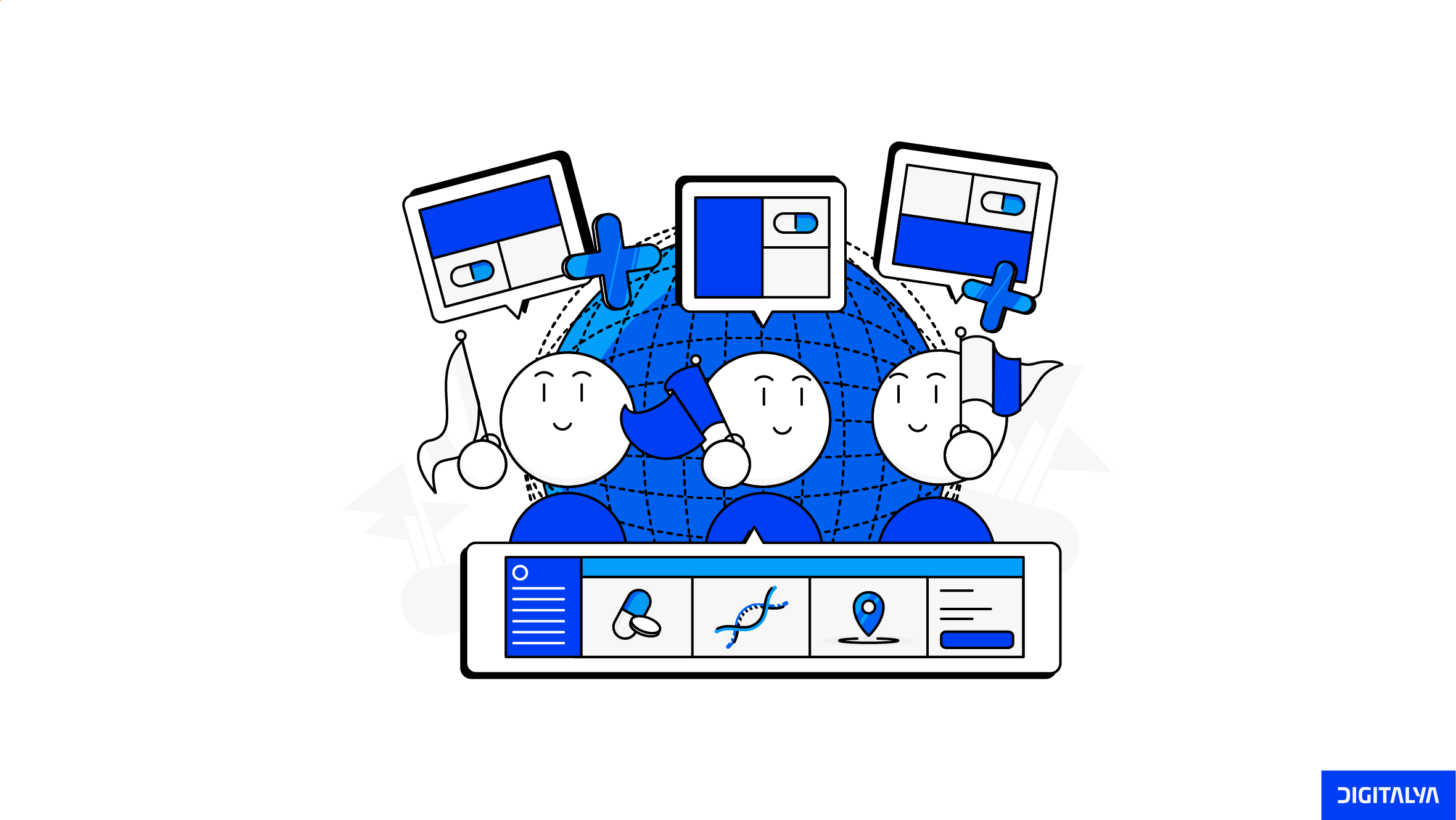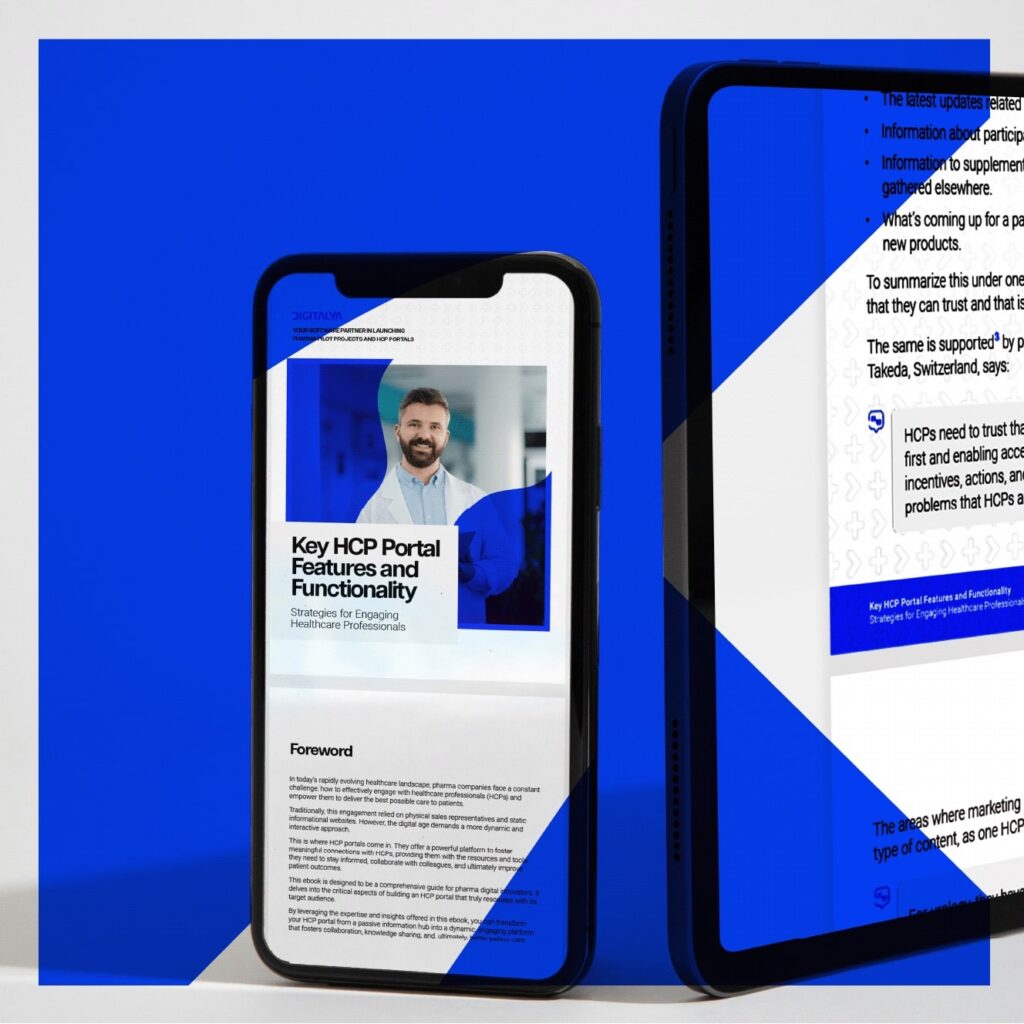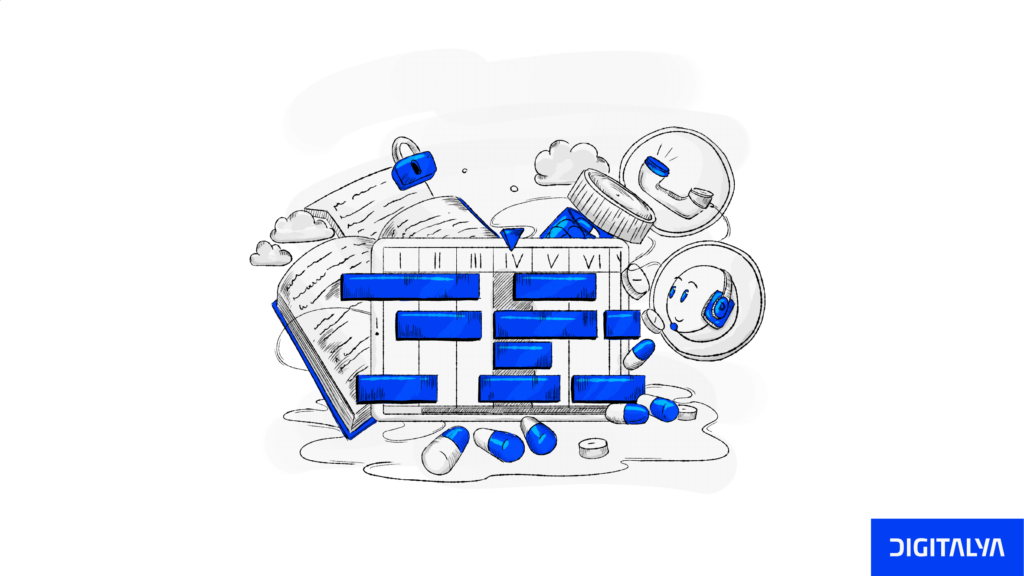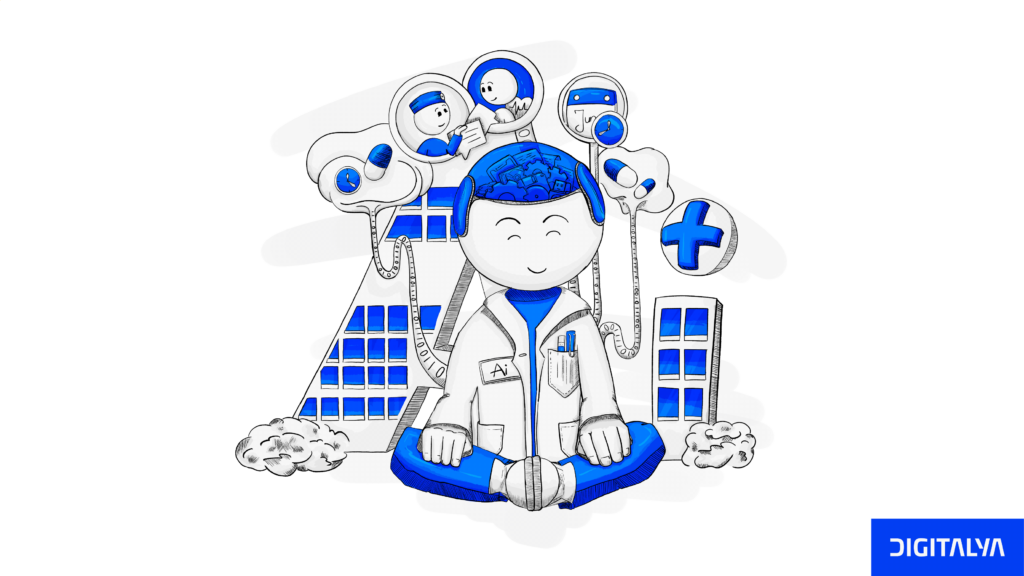The pharmaceutical industry relies on standardization, as it deals with products that directly impact people’s lives, and every detail must be under control. For quality and safety management, standardization is vital.
However, when discussing communication and marketing, good practices have proven that adapting to local markets is an important factor for success. So, the natural question arises: which approach works best for pharma software, whose role has become increasingly pivotal?
Striking the right balance is essential for optimizing operations and production, ensuring regulatory compliance, and tailoring solutions to regional specificities.
1. The importance of software standardization in the pharmaceutical industry
The pharmaceutical industry is strictly regulated by various sets of guidelines and rules, such as the Good Manufacturing Practice Regulations (GMP), a global set of regulations applied to the manufacturing and managing of pharmaceutical products and services, as well as their quality control testing.
Such rules and guidelines are standardized and underline the importance of having the same requirements in all the countries where the pharma products are marketed. To ensure production quality and correct implementation of standards, companies use Pharmaceutical Quality Management Systems (QMS). These are put in place by pharmaceutical QMS software, relying on standardization.
Pharma software standardization is no exception, especially with the digital transformation in pharma speeding up. It involves establishing uniformity in healthcare organizations’ processes, interfaces, and functionalities across different regions or departments.
Although uniformity may seem counterintuitive in a society where we strive to celebrate diversity, it plays a crucial role in streamlining processes, process digitization, reducing operational costs, ensuring consistency, and, very importantly, achieving regulatory compliance.
2. The challenges of software localization in the pharmaceutical industry
Yes, standardization brings about efficiency in manufacturing and the business process, but it also misses much potential that lies in the cultural variety. Sometimes, using the same “recipe,” no matter the country and people, can do more harm than good. Sometimes, a nuanced approach is called for.
When we talk about localization related to a pharmaceutical software solution, we mean customizing global pharma software to meet specific regional or local requirements that address linguistic, cultural, and regulatory differences. We talk about custom healthcare.
But how do you manage to maintain consistency and compliance, especially in the highly sensitive pharma industry? How do you adapt a message to a specific cultural background and make it still sound like the brand’s voice? What do you do when differences go beyond words? When is it about people’s relation to power and how they report and communicate to superiors?
These challenges need careful thinking through when going with a localized implementation of pharma software, be it ERP software, pharmacy management software, reporting software, analysis software, or inventory management software.
3. Standardization in Pharma Software
3.1 Definition and Concept
In its wide sense, software standardization involves developing and implementing consistent processes and features across different units or locations. This principle also applies to a pharmaceutical organization and its software solution. When a company implements standardized software for pharmaceuticals, all stakeholders operate on a unified and standardized platform regardless of location.
3.2 Advantages of Standardization
Anyone who has used a software solution at a certain point, especially when collaborating with someone using the same software, is aware of the benefit of standardization.
It simply makes sure that everyone uses it in the same way. Here are some clear advantages for the pharmaceutical industry deriving from software standardization:
Consistency: It is important to deliver a consistent user experience and workflow. It positively impacts the brand image and experience; it can help enter a market faster and, more importantly, reduce the chances of errors.
Processes become more efficient, and information management and support are easier to provide no matter the location, as everyone “speaks the same language.”
Improving Efficiency: When you streamline processes, you obtain important cost savings in terms of development, training, and maintenance. It is an aspect not to be ignored.
Simple misunderstandings in using the pharmacy software, for instance, or the time needed to train people for software variations depending on location, bear hidden, often unnoticed costs that add up to a consistent sum.
Reliable measurements: when you use the same standards, you can better rely on data accuracy. Moreover, measuring and comparing results across organization branches and markets, such as financial reports, patient engagement, patient experience, or customer success, is easier.
Client behavior and employer engagement can be measured and compared to an extent to find what goes well and what can be improved.
Compliance with industry regulations: there are international regulations that govern the pharma industry that, themselves, impose certain standards to be obeyed. So, to expand in other markets, a pharma company needs to standardize its products and processes, hence its pharma software.
3.3 Challenges and Limitations
One would think that standardization, by definition, should be easy to implement. Same features, same rules, same methods – what could create difficulty? However, standardization has its own challenges and quite some limitations. Nothing that can’t be overpassed once you are aware of them.
Resistance to Change: At first glance, it seems contradictory. But applying certain standards can very well involve change in countries or branches where things have been done differently. Users are already accustomed to their local variations, so implementing standardized software may face great resistance.
Flexibility Concerns: Tasks run smoothly and fast when standards are in place. But things rarely stay the same, generally speaking. So, what happens when sudden changes occur that were not included in the standardized processes?
Standardization might limit the adaptability of the software to specific situations. Going even further, clinging too much to standards and ignoring regional needs may affect sales and productivity in the long run.
3.4 Case Studies: Successful Implementations
Software standardization in healthcare has proven life-saving in Wake Forest University Baptist Medical Center and its intravenous (IV) infusion safety initiative. There, the medical staff realized that there was a negative impact of variations in infusion pumps and medication use in both operating rooms and the intensive care units.
After trying different process and medication standardization methods, the medical committee implemented a new “smart” infusion technology, a modular IV medication safety system. It involves a common user interface and modules for syringes and large-volume pumps.
The software uses hospital-defined profiles for specific patient types and patient care areas. For example, the software sets dosage limits, alerts, infusion “pauses,” or clinical advisories for anesthesia use.
As a result of this standardization software tool, standard dosages for the operating room are prepared in the pharmacy and can be quickly accessed. IV infusion pumps from the operating room stay with the patients upon transfer. ICU patient admission time has decreased from 20 minutes to 10, even 5 minutes.
4. Localization in Pharma Software
4.1 Definition and Concept
Now, let’s talk about the other side of the balance: localization. What does it mean in terms of pharma business software?
Speaking in general, localization is adapting software to meet a specific region’s linguistic, cultural, and regulatory requirements. In the context of pharma software, this could involve translating interfaces, accommodating local workflows, and ensuring compliance with regional regulations.
4.2 Advantages of Localization
We already saw how standardization helps pharmaceutical companies be more productive and provide a consistent experience. So, why bother with custom software for every country or region where you are present? The short answer – is customer success and happier employees.
Going more in-depth, there are two major advantages of pharma software localization:
Cultural Relevance: when you tailor the software to the local culture, you enhance user acceptance and engagement.
Regulatory Compliance: In addition to the global sets of regulations, pharmaceutical companies must also obey specific regulatory requirements in different regions, which can be done through custom software development.
4.3 Challenges and Limitations
As to be expected, localization also has its limits and challenges. This, again, doesn’t mean you should avoid it, but make sure you have all the data to get the most out of this strategy.
Increased Complexity: Managing multiple versions of localized software can increase complexity in development and maintenance. Delivering training for the localized versions will require extra human resources and time.
Consistency Risks: As the variations increase, keeping the consistency of your procedures, messages, and data, even organizational culture, can be challenging. You need to set clear guidelines for what stays necessarily the same and what can become adaptable.
5. Finding the Right Balance
Deciding between standardization and localization in pharma software development is not a black-or-white matter. As you saw above, both approaches have advantages and limitations. There are some principles to consider, which will help you decide how much of the two you’ll include in your market expansion strategy.
5.1 Regulatory compliance and standardization. Understanding the pharma industry’s requirements
The pharmaceutical industry is one of the most compliance-governed sectors. You cannot move a needle without being 100% certain you respect all the rules that apply to your products and services in a particular market. So, to strike the right balance, it’s crucial to deeply understand the pharmaceutical industry’s diverse requirements, considering both global standards and regional nuances.
Ensuring regulatory compliance is a non-negotiable aspect of pharma software. Standardization can aid in meeting global regulatory standards, but a nuanced approach is required to address specific regional requirements.
5.2 Solutions tailored to regional specificities
No two branches function exactly in the same way, no matter the organization. Whether we talk about different cities or countries, be it management solutions, pharma marketing software, pharmacy accounting software, or a medical software application, its usability depends greatly on people’s different cultures, habits, mentalities, and mother tongues.
Localization becomes essential to tailor software solutions to specific regional needs, ensuring they align with local workflows, languages, and regulatory frameworks.
5.3 Achieving interoperability
One of the great needs in medical institutions and the pharma industry is the ability to connect different specialties to reach a diagnosis or correct line of treatment.
Cross-referencing data is very difficult because most health institutions and facilities run their own management systems with their own medical devices and software.
Strategies for balancing standardization and localization should prioritize interoperability, allowing different components to work seamlessly together to ensure data integrity and allow access to data analysis.
5.4 Leveraging information technology to streamline localization processes
One of the greatest challenges of localization is the translation of large documents (user manuals, manufacturing instructions, regulations, etc.) into various languages. In a single pharmaceutical software project, thousands of pages can be translated into dozens of languages.
It is an immense effort and requires teams of hundreds of professional translators who are not only good linguists but also specialized in technical terms. Technology, including advanced translation tools, data management, and adaptive interfaces, can streamline the localization process, making it more efficient and cost-effective.
6. Strategies for balancing standardization and localization
You can use several approaches to balance standardization and localization in your strategy.
6.1 Customization vs. Standard features
Identify and choose the regional needs that you can address with customizable features. Standardize those elements that ensure consistency and compliance.
6.2 Scalability and flexibility
When you set about software development for your pharma company, consider localization from the beginning to the first talks with a healthcare development company.
Design software features that are scalable globally but flexible enough to accommodate local variations. It is easier to adapt gradually to a pharma ERP that is already designed to accommodate localization features than to change standard software.
6.3 User training and adoption
Localization will be as successful as the effectiveness of your people training. In other words, make sure that whatever software for the pharmaceutical market you build, your users will easily adopt it and make the most of it.
Invest in comprehensive user training programs to facilitate the smooth adoption of your software with standardized and localized features across different regions, even healthcare organizations.
6.4 Feedback loops and continuous improvement
As in a clinical trial, in digital product development, it is equally important to assess the response to your product and make the necessary changes. Establish feedback mechanisms to gather insights from local users, enabling continuous improvement and adaptation for product development.
A customer story, commercial analytics, electronic health records, or even patient experience are valuable data that can tell how well the software performs.
6.5 Impact on Data Security and Privacy
Like any entity that works with data analytics, especially in the healthcare sector and pharmaceutical production, data security and privacy are extremely serious matters. Ensure that both standardized and localized versions of pharma software adhere to the highest standards of data security requirements and privacy regulations.
7. Recommendations for pharma software companies seeking to optimize global reach and compliance
- Conduct In-Depth Industry Analysis. When you consider and understand global standards and regional requirements, you can develop actionable insights into pharma software that will prove efficient no matter where it is implemented.
- Regulatory Compliance is a must. Develop a deep understanding of global and regional regulatory information, ensuring software solutions comply with all relevant standards.
- Analyze insourcing vs outsourcing pharmaceutical software development: Leverage the internal knowledge and resource center and add value through the capacity and ability of a development company. Going with external app development services mixed with internal know-how can streamline both standardization and localization processes, making them efficient and cost-effective.
- Promote Interoperability: Design a pharmaceutical software solution that prioritizes interoperability, allowing seamless integration across different regions.
- Establish Continuous Improvement Mechanisms: Implement feedback mechanisms that gather insights, which, in turn, enable adaptation and continuous improvement.
8. Conclusion
As stated above, finding the right balance between standardization and localization in pharma software is not a matter of choosing one side or the other. As pharmaceutical companies navigate the complexities of a global market, the ability to streamline processes, ensure regulatory compliance, and adapt to regional specificities becomes a competitive advantage.
Ensuring that software solutions meet the diverse needs of stakeholders worldwide requires a harmonious blend of standardized features and localized adaptations.






